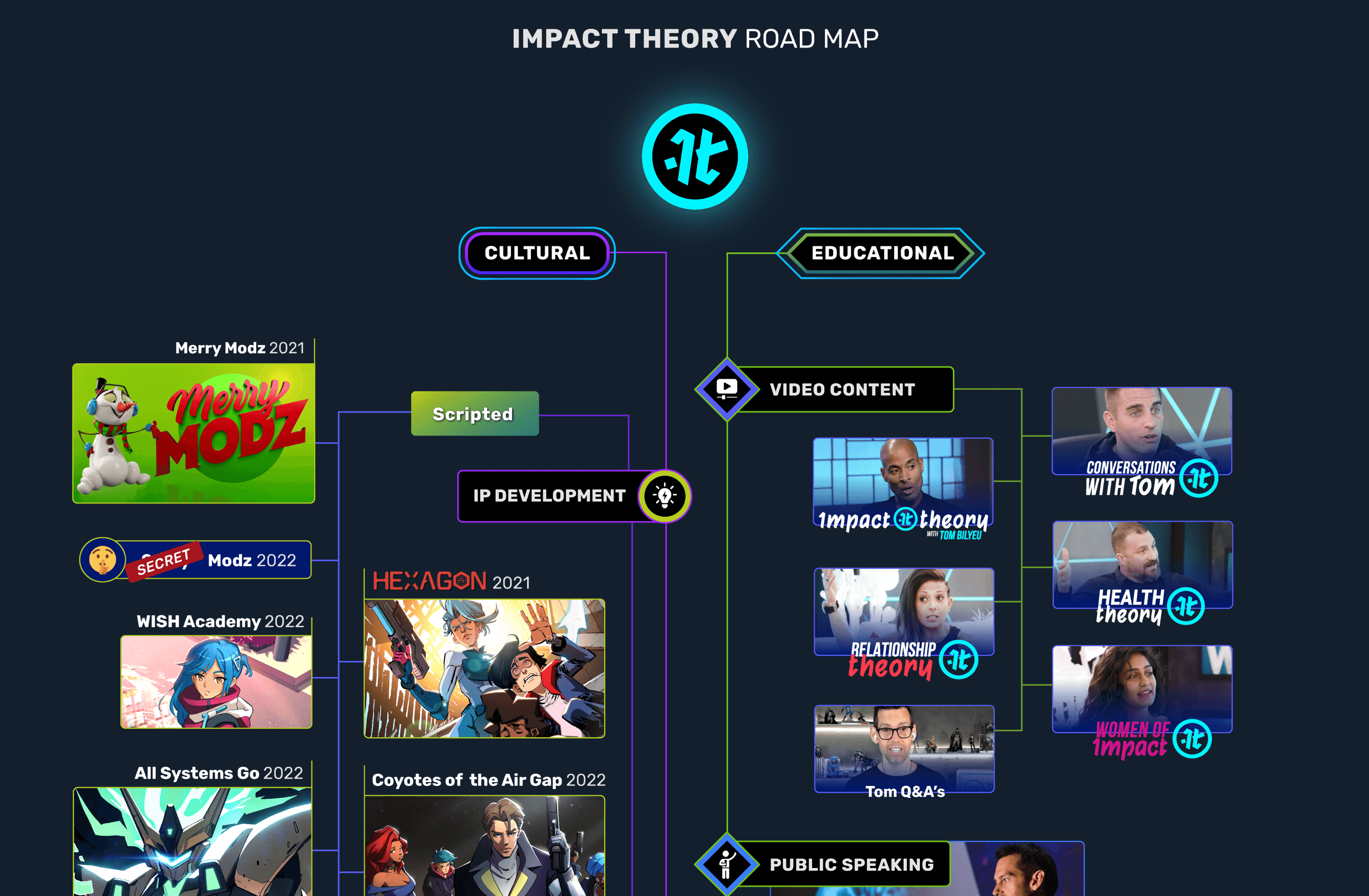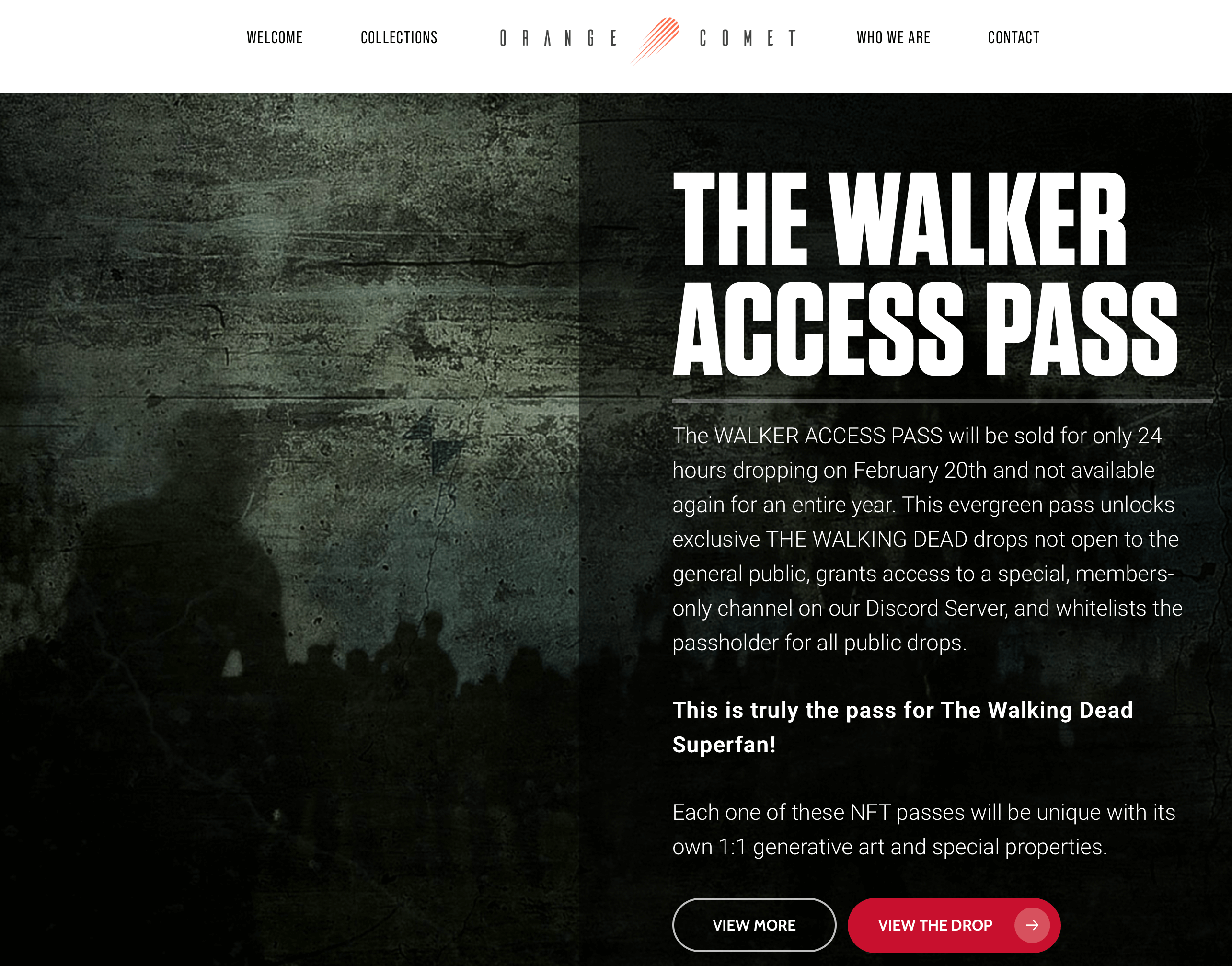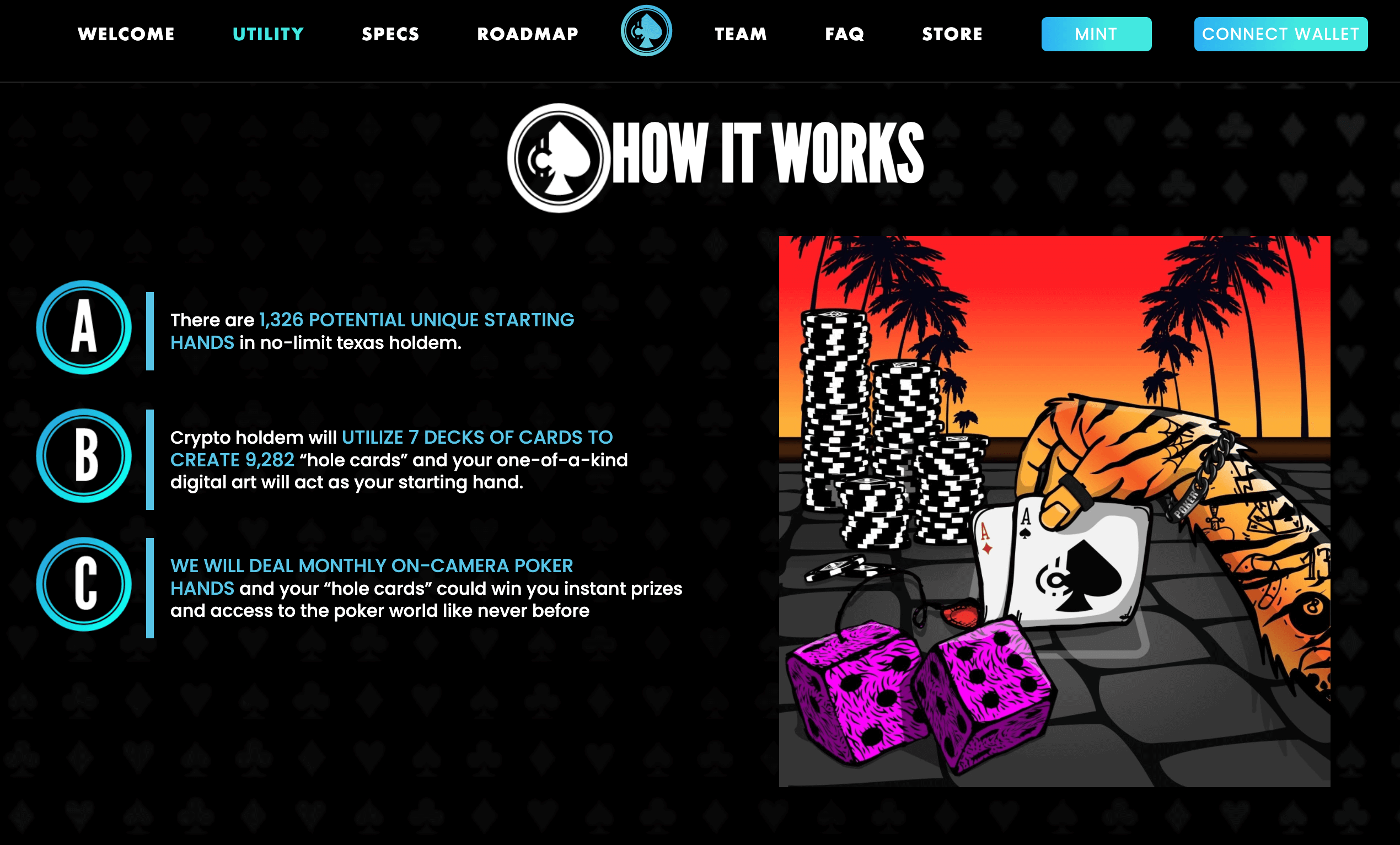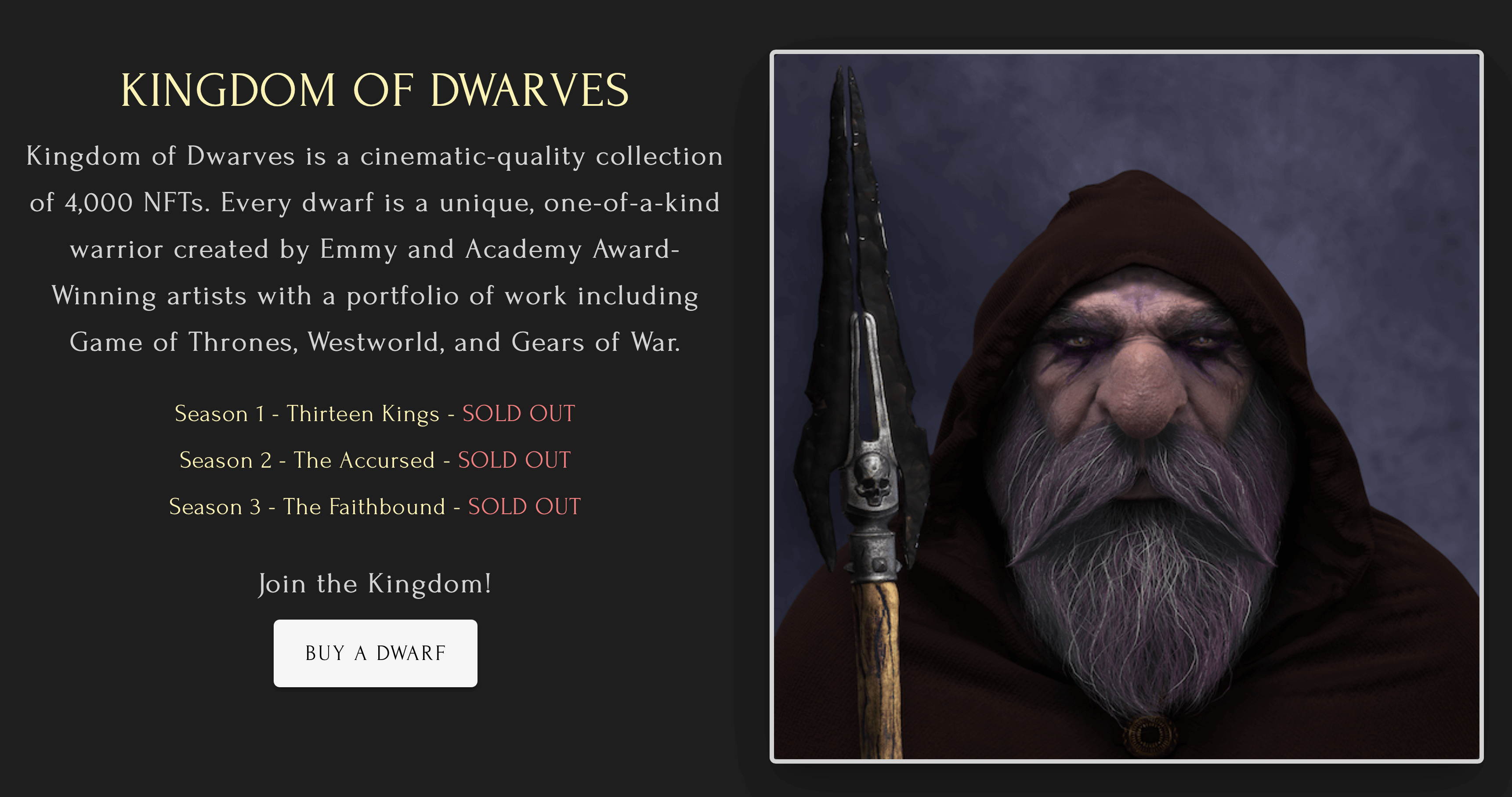Got a big idea for a new NFT project? Not sure how to begin?
In this article, you'll discover the five key steps to designing and launching a successful NFT project.
Community Is Key to a Successful NFT Project
One phrase you've probably been hearing over and over again lately is the creator economy—this movement in which creators can build an entire ecosystem around their community. Well, standing front and center of this movement are NFTs.
NFTs are giving creators the power to build a platform around the projects that are meaningful to them with those who are close to them in philosophy. These NFTs are fueling everything they're already doing today.
Many of these creators have already been building successful communities on platforms like social media. Now their communities serve as the platforms. NFTs are changing the way we do business, the way we build communities, and the way the world sees creators.
Deciding whether to invest in an NFT project starts with digging into two major pieces: who are the founders and do they have a roadmap?
Often, as you're looking at the roadmap for various NFT projects, you'll see a laundry list of ambitions laid out about the different phases of their project, what they'll be giving away to their community, and what's going to happen when they hit certain milestones. Yet when you study the community that the founders have already built, they don't always have one that can support their roadmap. At least, not within the realistic timeframe they've laid out.
However, one thing every successful NFT project does have in common is a synergy between the founders and the community that aligns with their roadmap.

So before you even start planning an NFT project for your business, take a look at your current community and the type of relationship you have with that community. Do you have a symbiotic relationship that you can build on together? Can you design a realistic roadmap that aligns with the relationship you have with your community?
Once you have that in place, here's a five-step process you can follow to plan and launch a successful NFT project.
#1: Define the Goals for Your NFT Project
The first step in planning an NFT project is to decide what your desired outcomes are. Some popular goals we're seeing right now from businesses are a general desire to get ready for the metaverse, build a closer community, and/or provide utility or value to their audience.
Some businesses are also using NFTs as an alternative to fundraisers. In the past, they might have had to do a Kickstarter or turn to a venture capital firm to raise funds. Musicians, for example, might develop NFTs to help fund their next single and recording time.
Whatever outcomes you're aiming for, make sure you clearly define them so both you and your team have a clear sense of where you're going with your project. This clarity will also help you develop strategies to incentivize your community to hang onto your NFTs such as granting access to minting NFTs in a future collection or providing periodic airdrops.
For example, The Walking Dead NFT Collection has committed to five airdrops over the course of the first year to anyone who holds onto their NFTs.
Get World-Class Marketing Training — All Year Long!
Are you facing doubt, uncertainty, or overwhelm? The Social Media Marketing Society can help.
Each month, you’ll receive training from trusted marketing experts, covering everything from AI to organic social marketing. When you join, you’ll also get immediate access to:
- A library of 100+ marketing trainings
- A community of like-minded marketers
- Monthly online community meetups
- Relevant news and trends updates

If the reward for holding onto the NFTs is big enough and the community holding those NFTs is valuable enough, then people will hang onto their tokens for the chance to get some of these future rewards.
And, of course, the value of any NFT is determined in part by how many people are looking to buy into the NFT project, as well as how many people are choosing to hold onto their tokens. As demand climbs, so does the value of the community and the NFT attached to it.
#2: Decide What Type of Art to Create for Your NFT Project
The next step is to decide what type of art you're going to create for your NFT project. How are you going to represent your utility and your roadmap? Do you want it to be PHP profile photos? 3D art? Drawings? Sounds?
What's most important is that your artwork attracts the people you want to join your community. For example, Crypto Holdem designs Texas Holdem cards for their NFTs, which provide utilities for people who love to play Holdem.

You also need to think about how big your NFT collection will be. Depending on the size of the collection, you may want to bring a designer on board to help you.
A designer can help you introduce some variety in your imagery by creating transparency layers that go on top of the NFT, referred to as traits. You'll need to decide how many traits you're going to have and what would make one design more or less rare than another.
After you've nailed down the artistic vision of your project, then you're going to need to find an artist to develop those different layers or traits. As things get rolling and the NFTs begin minting, you'll be able to define exactly how rare your rare traits are; perhaps out of your entire collection, only 10 of them will have a particular trait. Or perhaps every NFT will be one of a kind.

And of course, the rarer NFTs tend to sell for higher prices.
How and when you release the art for viewing can also make a huge difference in how your NFT project fares once you launch it. Some businesses like to release the art right away so their community can see some of the traits that would be available once they're able to mint their tokens.
Other fairly successful NFT projects didn't release any viewing of their art at all until the minting process began; at which point, buyers would see the art only after minting their NFT.
Of course, there's no right or wrong answer here, just a matter of understanding your audience and playing to their expectations. You don't even have to worry about whether they're going to like the art they're surprised with, because if they don't like it and choose to sell the NFT after all, that takes that NFT over into the secondary market and allows someone else to buy into the community.
#3: Design a Realistic Long-Term Roadmap for Your NFT Project
If you're going to launch a project within the NFT space, you need to have a roadmap that shows where you're going and gives your audience assurance that you're committed to the long-term success of your community and your project.

Discover Proven Marketing Strategies and Tips
Want to go even deeper with your marketing? Check out the Social Media Marketing Podcast! Publishing weekly since 2012, the Social Media Marketing Podcast helps you navigate the constantly changing marketing jungle, with expert interviews from marketing pros.
But don’t let the name fool you. This show is about a lot more than just social media marketing. With over 600 episodes and millions of downloads each year, this show has been a trusted source for marketers for well over a decade.
Essentially, a roadmap is the key to laying out a brand map of what people can expect to receive down the road for being a part of the community. It can be as simple as promising to hold a giveaway at certain milestones, a whitelist token at the next launch, or special access to some premium experience.
Your audience and community will be much more invested in the success of your community by being granted the opportunity to take part in that mission—not just as a subscriber but as a partial owner of the community.
A roadmap helps your audience manage expectations regarding your NFT project and it also keep them engaged and hyped up about the project, helping you to maintain a thriving community. The more excited they are about your roadmap, the more likely they're going to advocate for you and tell anyone who'll listen about the project.

Every time you hit a new benchmark on your roadmap, you get to celebrate that with the community and watch how thrilled they are about being a part of the community and seeing those milestones. They'll want to continue talking about that online, on Twitter, on Discord, anywhere they're connected socially.
So watching the different phases of your roadmap come to fruition is exciting, not just for you as the NFT creator but also for the community that buys into your project.
#4: Assemble Your Team
Now that you know the goals for your project and you've designed a roadmap to get there, you need a team that can execute your plans. Your team might include leadership, artists, technical developers, influencers, and community managers, to name a few.
Obviously, as the founder of your NFT project, you're a critical piece of your team. You drive the vision. It's part of your brand and people are going to know you—it's your reputation on the line. So, as a founder, you have to communicate your vision in a way that will get people excited. Your leadership is crucial in this space.
Then there's the artistry. You've already decided what type of art you want to use in your project so you need to find an artist who can create it. If you don't have someone in-house, you'll need to start looking for someone who can bring your project to life. Maybe there's someone in your community who would jump at the chance at being a part of your project.
Technical development is self-explanatory. You need people who understand smart contracts and coding and can help you develop a website and other pieces of your technical stack for your NFT project.
You're also going to want to bring in people with influence to help you promote your project. These influencers, especially those with a marketing background, get the ball rolling in developing your community. As your community grows, you'll also need a community manager, moderators, and so on, to keep the community engaged.
#5: Execute Your Plan
The last step in launching your NFT project is executing your roadmap. You can launch an NFT project with all the best intentions, but if you don't execute what you've promised, your community won't trust you or your project anymore.
Leading up to a launch, be open and transparent with your community about your progress. If you have to push back a launch to deliver on the value you promised, being upfront with your community will help keep them on your side.
If, on the other hand, you stick to a launch date no matter what without the capacity to deliver and without divulging information to your community, it can backfire and sink your project.
John Mediana is an NFT growth strategist and the founder of Executive Brand Growth, an agency that helps leaders develop their personal brand and content strategy. He's also the co-founder of NFT Nashville, a crypto community in Nashville. Find John at @johnmediana on Twitter, Instagram, and LinkedIn.
Other Notes From This Episode
- Download John's free checklist at www.NFTNashville.Live/SME.
- Check out M-U-R-I by Haus, Kingdom of Dwarves, The Walking Dead Official NFT Collection, Lazy Lions, Crypto Chicks, Bored Ape Yacht Club, Crypto Holdem, Rarity Sniper NFT tool, Impact Theory Founder's Key, and VeeFriends.
- Connect with Michael Stelzner at @Stelzner on Instagram.
- Watch the interviews on the Crypto Business YouTube channel.
Listen to the Podcast Now
This article is sourced from the Crypto Business podcast. Listen or subscribe below.
Where to subscribe: Apple Podcast | Google Podcasts | Spotify | Amazon Music | RSS
✋🏽 If you enjoyed this episode of the Crypto Business podcast, please head over to Apple Podcasts, leave a rating, write a review, and subscribe.
Disclaimer: The information provided on this website is provided solely for educational purposes and does not constitute any advice, including but not limited to, investment advice, trading advice or financial advice, and you should not treat any of the website's content as such. Social Media Examiner recommends that you independently research any information contained on this Website and that you speak with an investment professional before making any decision to purchase, trade, hold or sell cryptocurrency. Nothing herein should be treated as a recommendation to buy, sell or hold cryptocurrency. Social Media Examiner cannot guarantee the accuracy of any information listed on the website and is not responsible for any missing or wrong information. All information is provided as is and should be used at your own risk. Social Media Examiner disclaims all responsibility and liability for your use of any information found on the website.
Attention Agency Owners, Brand Marketers, and Consultants

Introducing the Marketing Agency Show–our newest podcast designed to explore the struggles of agency marketers.
Join show host and agency owner, Brooke Sellas, as she interviews agency marketers and digs deep into their biggest challenges. Explore topics like navigating rough economic times, leveraging AI, service diversification, client acquisition, and much more.
Just pull up your favorite podcast app, search for Marketing Agency Show and start listening. Or click the button below for more information.

